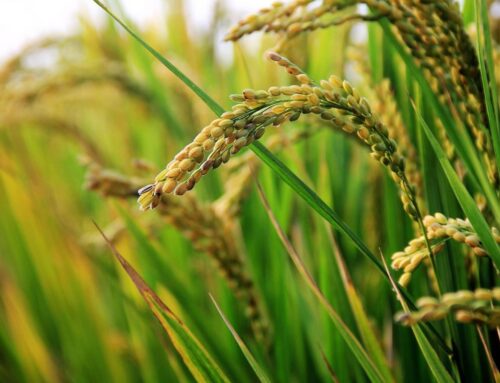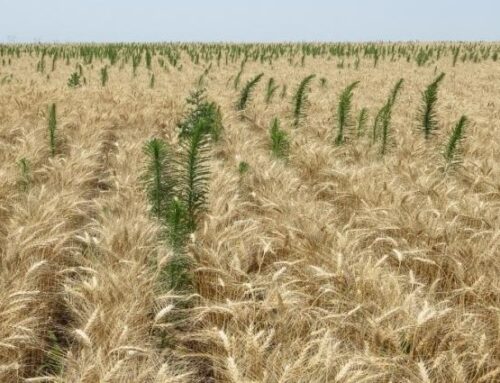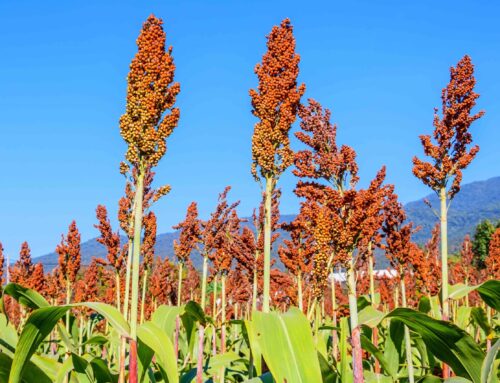
Following a few guidelines this fall can help make turf pop when golfers are itching to get on the course next spring.
If you have a question about turfgrass soil, or water management, or just agronomy in general, odds are good you have reached out, in some way, to Dr. Bill Kreuser.
“I have people texting me every day,” says Kreuser, an assistant professor and extension turfgrass specialist at the University of Nebraska in Lincoln. “I have people sending me Instagram messages. I have people sending me Twitter posts, emailing me, calling my office phone. It’s hard to keep track of them all sometimes when you have so many different avenues to communicate nowadays.”
Preparing your course for spring blooms can be hard, too, which is why Kreuser and a handful of other researchers and educators blocked out some time to look ahead five or six months. How should you prep for spring? And when should you start? (Yesterday. You should have started yesterday. Or maybe last week.)
Focus on fungicides
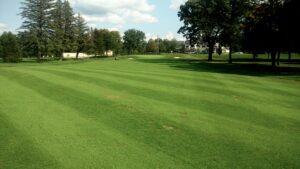 More than anything else, Kreuser and his fellow researchers want you to at least think about fungicides and how you use them. Are you using more than your course needs? Do you have too many applications scheduled on your calendar? Are some of those applications redundant?
More than anything else, Kreuser and his fellow researchers want you to at least think about fungicides and how you use them. Are you using more than your course needs? Do you have too many applications scheduled on your calendar? Are some of those applications redundant?
“One thing that I’m seeing frequently is that people forget that DMI fungicides and plant growth regulators are very similar in how they work,” Kreuser says. “I’m seeing a lot of people putting plant growth regulators down at the end of the year with their snow mold, and a lot of times their snow mold apps contain some type of a DMI fungicide.” That can result in a slower greenup — “weeks,” Kreuser says, “not just a couple days” — and, even more jarring, plenty of damage. Kreuser is working with graduate student Parker Johnson who is studying the effects of mixing DMIs with PGRs and how much various DMIs suppress growth.
A fall fungicide program also helps control spring dead spot, according to Dr. Mike Richardson, a horticulture professor at the University of Arkansas whose research has focused on cultural practices that affect cool- and warm-season turfgrass production in the Transition Zone. “Two applications of a preventative fungicide in the fall will generally give you good protection,” he says, with the first scheduled around the start of October and the second about a month later.
“Spring dead spot is often not treated as aggressively on fairways or roughs,” Richardson adds, “but control on a putting green is just critical because if you have a severe outbreak of spring dead spot on your ultradwarf greens, you’re going to be looking at those scars and you’re going to have a pretty bad surface for two or three months into the following season before those can really recover. It can really affect the playability and the aesthetics of the course if those diseases aren’t addressed, and you have to start in the fall to get ahead on them.”
And that is the bottom line: Without an appropriate mix, “the grass will look bad,” Kreuser says, “when the golfers want to be out golfing.”
Cut back on fertilizers
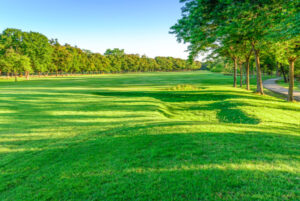
Shorter days and cooler nights curtail growth rates, which leads to less and less of a need for fertilizer. Applications vary from course to course and from region to region, of course, but Richardson tends to recommend most courses cut their fertility levels by about 50 percent in early fall — and in some cases even 75 percent.
“You just don’t want to stop fertilizing altogether, because the plant is still photosynthesizing, it’s still metabolizing energy, and it’s still growing, too,” Richardson says. “You may not see as much above-ground growth, but you may be getting some reserves down in your root system. You just don’t want to put it into a situation where it’s really nutrient-deficient. Finding that balance is key.”
“It’s popular to apply potassium in the fall,” says Dr. Eric Reasor, who joined PBI-Gordon as a research assistant earlier this year after two years as an assistant professor in the department of plant and soil sciences at Mississippi State University. “A little is good, but you don’t want to overdo it because the plant is only taking up so much nutrient there heading into fall. You don’t want to aggressively cultivate or aerate the plant heading into the fall, and you don’t want to damage the plant when it’s trying to acclimate.”
Better to stay on spoon-feeding programs, Kreuser says, “so that you’re having nice green color but you never get a big bang of growth.” That means “not putting down too much in, say, September here in the center part of the country or in the Northeast part of the country. You just continue to spoonfeed with light rates of fertilizer all the way through the year on greens.” The farther north you are, “you kind of want to limit your fertilizer” even in early October “because it sits in the soil and can either be lost to the environment, or it sits in the soil all winter and then we get this huge amount of fertilizer in the spring, the grass bolts out of the ground and it’s really hard to keep up with mowing.”
Shades of gray (and green)

Fall is a fantastic time to dive into light and shade analysis, according to Dr. Paul Koch, an assistant professor in the department of plant pathology at the University of Wisconsin in Madison who recommends studying shade patterns in June or July, then again in October as the sun is getting lower.
“Full shade is really damaging and can leave turf really susceptible to winter injury, ice cover, anoxia and crown hydration,” says Koch, whose expertise includes turfgrass management and urban ecology. The importance of studying “those more severe areas that have false shade” cannot be understated. “Making sure you have good sunlight penetration into those susceptible areas well into the fall will help that turf be healthier going into winter and it’ll just survive winter better.”
Tree shade can also provide a challenge to grasses to sense days are getting shorter, Kreuser says, as well as limit the amount of sugar that they can store going in the winter. “Shade management is always something we’re thinking about with winter hardiness.”
Shade analysis can also benefit weed control. “You can look in the shaded areas and see if you have weeds, like ground ivy or wild violet, and if you don’t have enough light to control them, those species are going to be more competitive than more desirable turfgrass,” says Dr. Matthew Elmore, a weed science extension specialist in turfgrass, landscapes, pastures and forages at the University of Rutgers whose program focuses on novel strategies to control weeds with fewer pesticide inputs. “You can use those weeds as indicators of a low-light situation — and maybe show your members that some trees need to come down.”
Whatever you do now will follow into — and throughout — 2021 and beyond.
“Your disease management program is a holistic program,” Koch says. “It’s not something that if you have that problem on July 15, I can come in and we can look at some things related to what you’re spraying. Really, it’s a holistic thing. It starts the previous fall with aerifications and all sorts of stuff to promote deeper root penetration, then continues into the early spring as you start to wake up and. It’s progression.
“A lot of times, if you have issues with dollar spot or anthracnose, it’s a buildup of something wrong with the program overall — and it’s not normally something that’s going to be a real quick fix. When I’m in there and I’m talking with the superintendent, I don’t just want to see their fungicide program. That’s an important part of it, but I want to see what else they’re doing. Are they knocking dew off? Are they fertilizing properly? What’s their irrigation schedule? How is the moisture content level? A lot of times you can kind of see that when you’re out on the golf course.”
Read the original article – CLICK HERE

